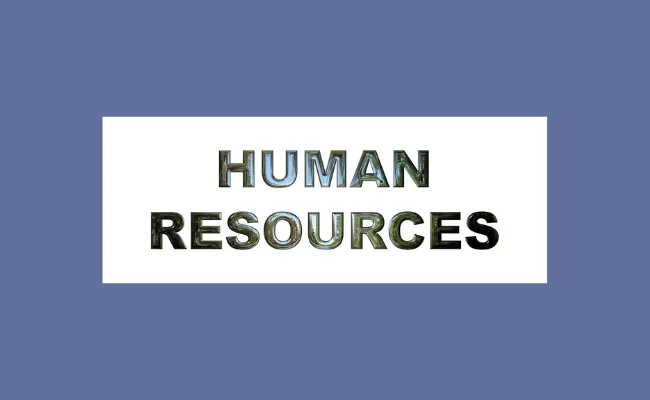
COVID-19 crisis has put the HR function on the centre stage of importance, visibility, and influence. So what can HR do to help organizations tide over the crisis smoothly?
The answer to this question lies in the concept of framing. Framing comprises a set of concepts and theoretical perspectives on how individuals, groups, and societies, organize, perceive, and communicate about reality. Frames are the boundaries, interpretations, and simplifications that we make mentally to understand a situation. People build a series of mental “filters” or frames through biological and cultural influences.
They use these filters to make sense of the world. So for example, if the frame of helplessness is used to view the pandemic, one would get paralyzed by uncertainty and slide into anxiety. On the contrary, the frame of ‘surviving against odds’ creates resilience and helps focus our attention on physical safety (through hygiene and social distancing) and psychological safety (through developing positive frames of resilience, hope, empathy, and centeredness).
The need of the hour for HR is to be mindful of the frames used to manage the pandemic. The choices made to mitigate the crisis are influenced by the creation of a frame. For example, the frame of equating Corona infection with social untouchability led to physical violence against those who contracted the disease. It also tempted people to not report the disease upon contacting. But a frame of empathy and support by the organization led to faster detection and reporting and subsequent quarantine and cure.
We have both reactive frames, (shaped by our emotional responses), as well as proactive frames, (shaped by logical thought).While handling a crisis the framing is of mitigating the losses. It is a reactive frame and leads to the formation of crisis teams. While these reactive frames are essential in the early days of a crisis, the frame needs to change as one move towards the post COVID world.
In his book “Good to Great,” Jim Collins coined the term “The Stockdale Paradox” to describe James Stockdale’s approach to surviving and leading as a prisoner of war during the Vietnam conflict. He wrote that leaders need to balance a brutally honest view of today with a rational reason to hope. The frame of hope leads to resilience. Tversky and Kahneman (1981) have shown that framing can affect the outcome of choice problems (i.e. the choices one makes). This led to the development of prospect theory (Tversky and Kahneman 1981).
To give a more lasting solution in the post-pandemic world, HR should not look at the current pandemic as ‘episodic’ which makes it a one-off event. Rather it should be seen as ‘thematic’ having the probability to recur (Iyengar, 1991). This will lead to identifying permanent solutions and having a robust disaster management system in place in the organization. This thematic frame will add more meaning to the current accelerated pace of capability development where learning is focused on how to use technology and analytics for the smooth functioning of daily operations from remote locations.
The HR in post covid world needs to also operate with a frame of care and human safety, encouraging the unleashing of creativity to stay engaged and productive. This framing can generate improved organizational commitment, psychological contract, and motivation, both in the short and the long run.
The new normal of working from home has led to a new frame where face time will no longer be the measure of worker productivity. Instead, we will finally focus on results. Other interesting frames are companies moving from hiring based on degree pedigree to hiring based on skills and encouraging more apprenticeship jobs.
Framing can also help convert the present crises into an opportunity. For example, the Post Covid world has seen diversity and inclusion in a new light. It has opened the doors to young mothers, who can work from home and be productive. Companies realize that including different perspectives and having people with different capabilities can contribute a great deal to the organization. This framing is an example of surface-level diversity. For a deep level diversity to make an impact in the workplace during covid times, the emphasis needs to be on attributes and personality traits like agility, resilience, dealing with uncertainty, and coping with anxiety.
The corona virus pandemic is fundamentally shifting how we live and do business and will accelerate the Fourth Industrial Revolution, fuelled by smart technologies such as Artificial Intelligence and mobile super computing. Transforming of talent models and digitizing the talent value chains will be a big focus area. That means incorporating more gamification, virtual reality, and augmented reality for corporate learning.
This change is driven by the frame that machines will handle problem-solving and humans will focus on problem finding In the words of Shunryu Suzuki, author of Zen Mind, Beginners Mind, “In the beginner’s mind, there are many possibilities, in the expert’s mind, there are few.” Thus as HR leaders one needs to use the right frames to challenge the perceptions, and lead this disruption of work.
*This is a guest post written by Dr. Preeti S. Rawat, Professor and Area Chairperson HR/OB Department, KJ Somiaya Institute of Management. Editor, Business Perspectives and Research, Sage Publications. Chairperson, Centre for Diversity Management and Inclusion
Stay connected with fellow students on PaGaLGuY for CAT Exam 2020 Discussion
Stay connected with fellow students on PaGaLGuY for [OFFICIAL] K J Somaiya Institute of Management 2021-2023 MBA Admissions
